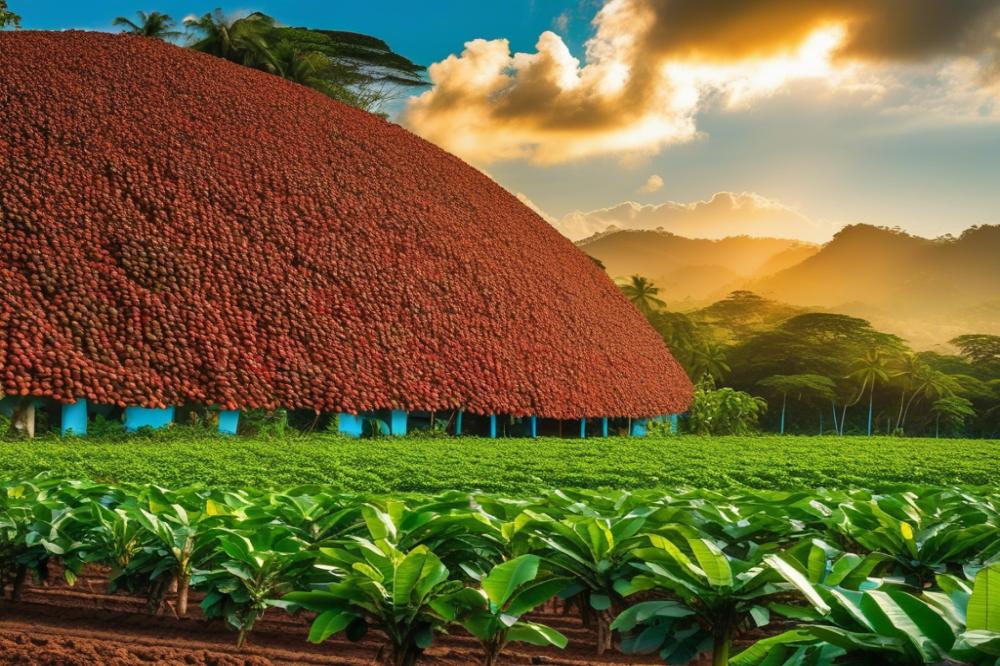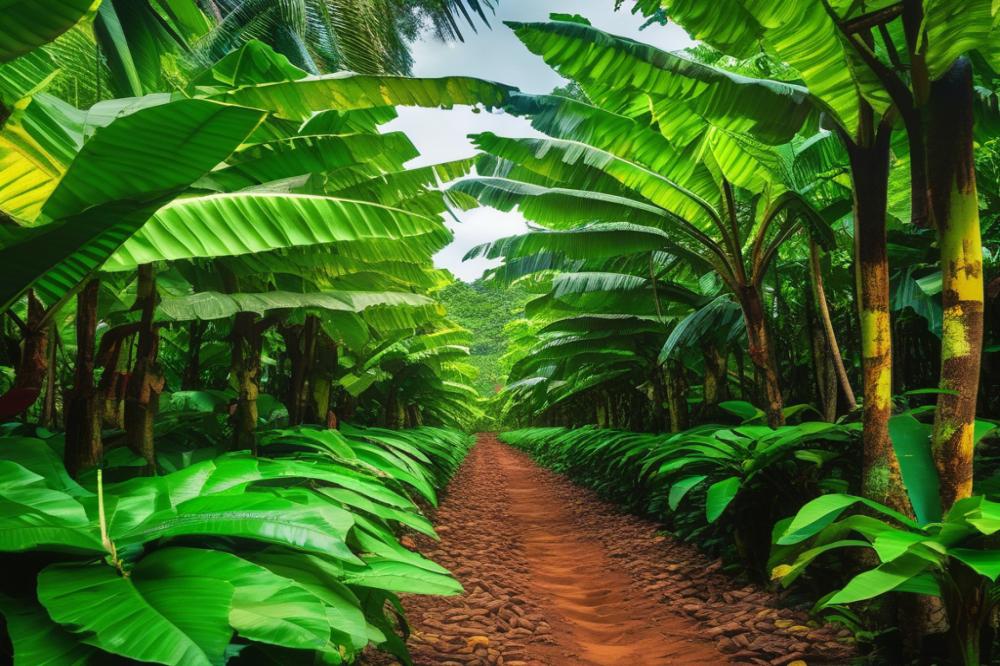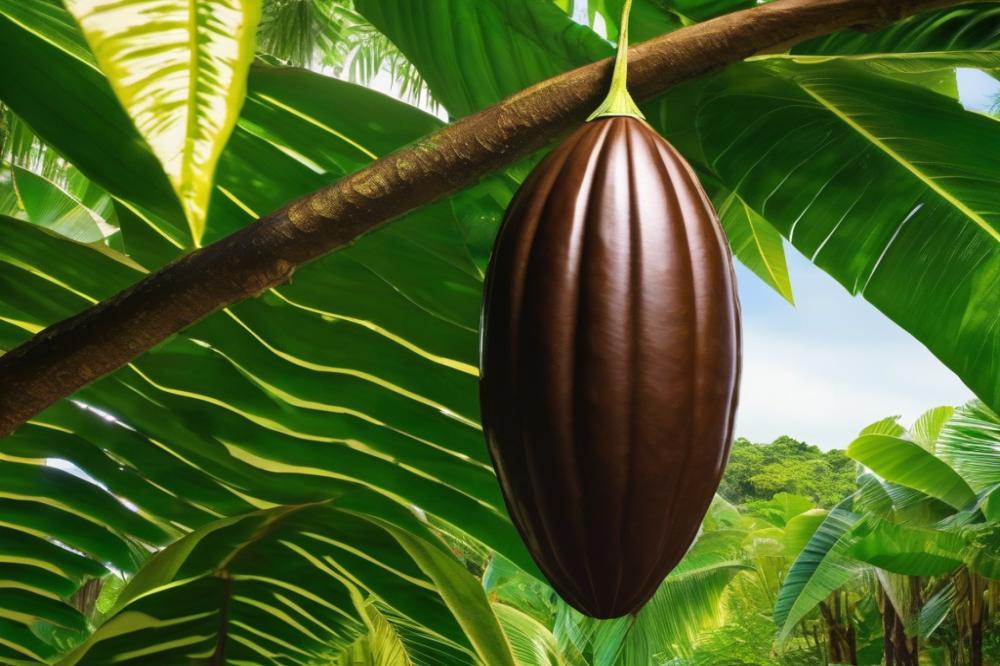Overview of Cocoa cultivation
cocoa farming plays a vital role in many tropical economies. Farmers grow cocoa trees primarily for the beans, which are processed into chocolate and other products. This crop stands out as an important cash crop in various parts of the world, especially in West Africa, where it significantly contributes to rural incomes.
Understanding the complexities of cocoa tree care is essential for success. Proper care involves knowing the soil requirements, managing pests, and creating favorable growing conditions. Farmers face many challenges, including diseases and fluctuating market trends. Yet, the rewards can be great for those who navigate these obstacles effectively.
This guide aims to assist farmers in improving their practices and yields. Key topics will include harvest techniques, the fermentation process to enhance flavor, and an overview of sustainable practices. Additionally, various cocoa varieties will be discussed, since choosing the right type can impact both quality and profitability.
Ultimately, knowledge of agronomy is crucial. With the right information, farmers can achieve better results, ensuring their cocoa trees thrive in an ever-changing landscape. Embracing these strategies will not only benefit individual farms but also contribute to the broader cocoa industry.
Cocoa cultivation: Understanding the Cocoa plant
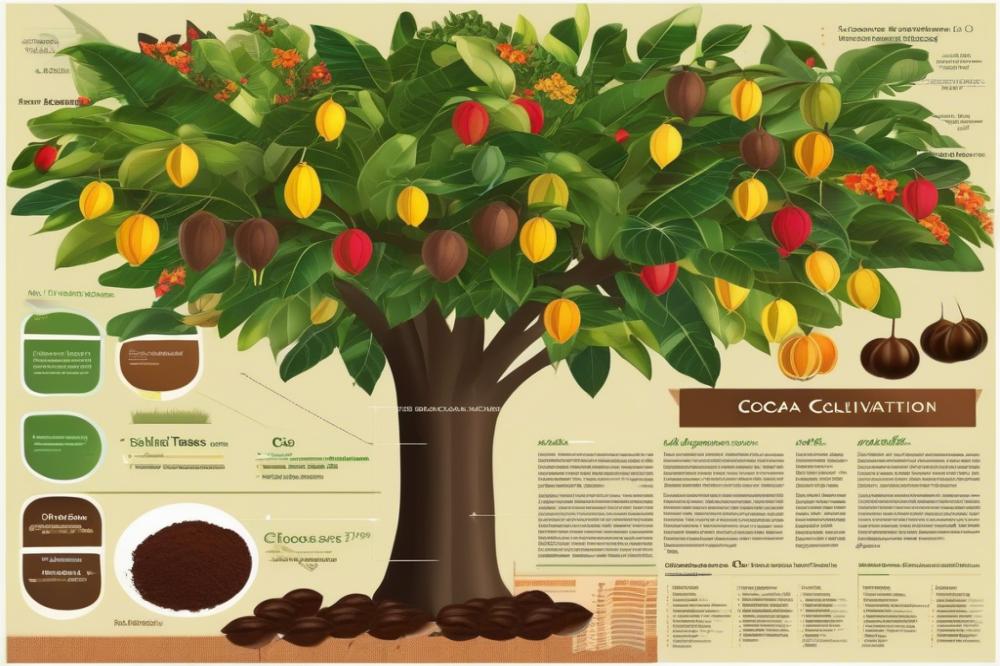
The Cocoa plant, known scientifically as Theobroma cacao, is a tropical tree that thrives in warm, humid climates. Its pods grow directly from the trunk and branches, a feature that makes it distinct from many other fruit-bearing trees. Inside these pods, valuable cocoa beans are nestled. The beans are crucial for producing chocolate, making this plant economically significant across the globe. In addition, cocoa tree care is essential for maintaining healthy plants and achieving high yields.
Cocoa Varieties
Several cocoa varieties exist, each with different flavors and characteristics. The three main types are Criollo, Forastero, and Trinitario. Criollo is known for its fine flavor but is more susceptible to pests and diseases. Forastero is hardier, yielding more beans, making it the most common type grown worldwide. Trinitario is a hybrid of the two, offering a mix of resilience and flavor. Farmers should consider their market trends when selecting cocoa varieties to grow.
Importance of Genetic Diversity
Genetic diversity among cocoa plants plays a crucial role in sustainable practices. A varied gene pool can improve resilience against pests and diseases, crucial for the industry’s future. Moreover, diverse plants can adapt better to changing environmental conditions. This diversity allows farmers to optimize their growing conditions and may lead to innovative fermentation processes that enhance chocolate quality. Understanding agronomy can help farmers manage risks and secure a consistent harvest.
Soil requirements are also vital for successful cocoa cultivation. Rich, well-drained soil provides the nutrients necessary for robust growth. Without proper soil health, trees may struggle to thrive, leading to decreased yields. Effective pest management techniques are equally important to safeguard the plants from threats. Farmers who adopt a multi-faceted approach can enjoy better outputs and higher quality beans.
Soil Requirements for Cocoa Trees
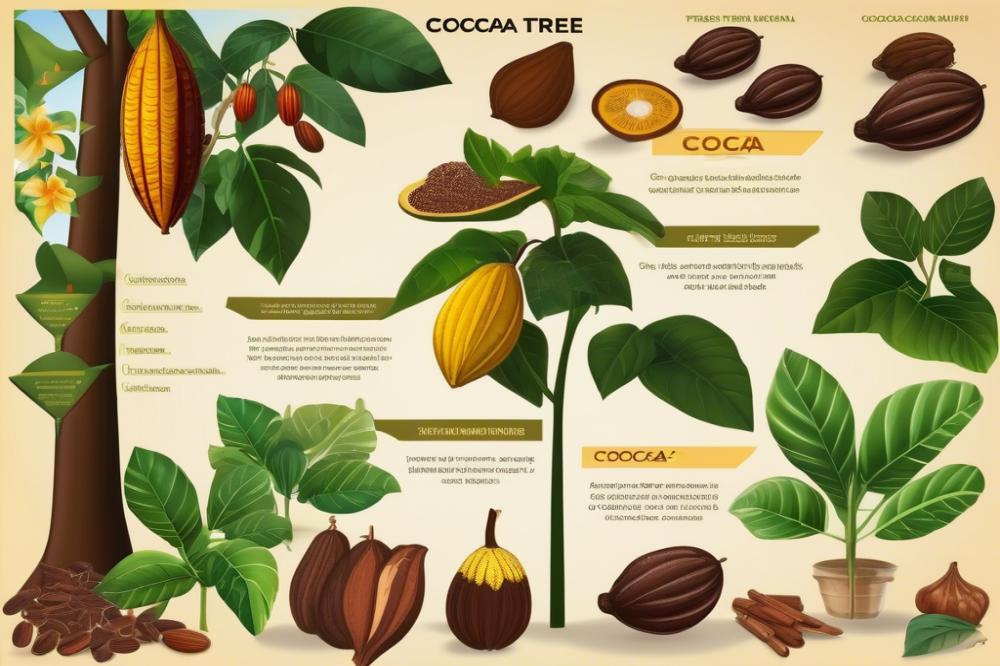
Cocoa trees thrive in specific soil environments. The ideal soil type consists of well-drained, loamy soils. A combination of sand, silt, and clay contributes to this loamy structure. Organic matter plays an important role too; decomposed leaves and compost improve soil health. Excellent drainage is crucial. Waterlogged soils can harm the roots and stunt growth.
Nutrient management is a key aspect of cocoa tree care. Nutrients such as nitrogen, phosphorus, potassium, and magnesium are vital for healthy development. Regular soil testing helps farmers understand the current nutrient levels. Based on results, they can apply fertilizers accordingly to support the trees effectively. Sustainable practices, like using organic fertilizers, promote long-term soil health.
Soil pH Levels
The pH level of the soil matters greatly in cocoa cultivation. Ideally, it should range between 5.0 and 7.0. Acidic soils can hinder growth and limit nutrient availability. Farmers can adjust the pH using lime or sulfur based on their soil tests. Monitoring soil conditions ensures that cocoa trees receive the proper environment to thrive.
Understanding the interplay of soil composition, nutrient management, and pH levels is essential for successful cocoa farming. Pest management should also be considered, as healthy soil helps in resisting pest outbreaks. Cocoa varieties may respond differently to soil conditions, influencing farmers’ choices in breeding and planting. By focusing on these factors, growers can optimize their harvest techniques and quality.
Growing Conditions for Optimal Cocoa Production
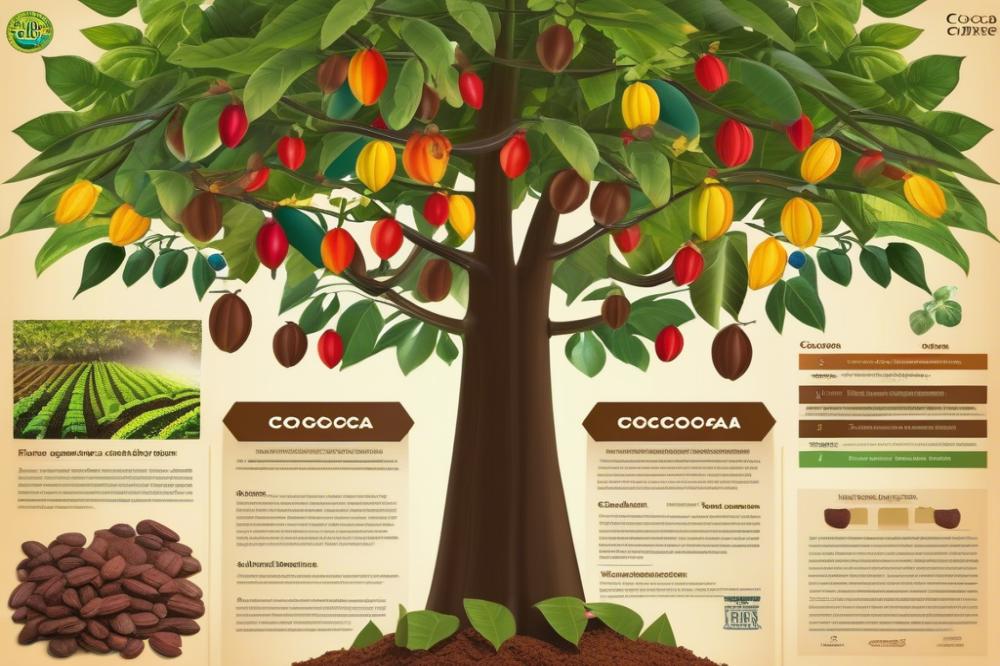
Climate Requirements
Ideal climate conditions are essential for healthy cocoa trees. These plants thrive in regions that offer a stable, warm environment. They prefer areas with consistent rainfall throughout the year. A tropical climate usually meets these demands. Rainfall needs to be about 40 to 100 inches annually for optimal growth. Extreme temperatures should be avoided. High or low temperatures can stress the plants, affecting their development.
Temperature and Humidity Preferences
Cocoa trees flourish in warm temperatures ranging from 65°F to 90°F. Excessively cold weather can hinder growth and even kill young plants. Humidity plays a crucial role as well. A relative humidity level of 70% to 90% is ideal. This balance keeps trees healthy and supports transport of nutrients. Proper humidity helps reduce the risk of diseases that could impact yield.
Shade and Light Conditions
Sunlight is critical for cocoa production, but too much can be harmful. Young cocoa trees, in particular, need some shade. Dense canopies of taller trees provide this protection while still allowing adequate light to filter through. A mix of sunlight and shade aids in their growth. Farmers often employ agroforestry to create a suitable environment. This technique involves planting various crops alongside cocoa to maintain soil health and support pest management. Different cocoa varieties may have slightly varying needs for shade and light. Understanding these differences can lead to improved harvest techniques in the long run.
Cocoa Tree Care
Regular maintenance practices are vital for healthy cocoa growth. Farmers should monitor the health of their cocoa trees consistently. This means looking for signs of pests or diseases. soil requirements play a crucial role in this process. Rich, well-draining soil contributes to robust trees and better yields.
Watering and Irrigation Techniques
Watering needs depend on the local climate and growing conditions. During dry spells, farmers must provide sufficient moisture. Drip irrigation is an efficient method. It delivers water directly to the roots, reducing waste. Rainfed systems can work, but they may not be reliable. Monitoring rainfall helps in deciding when to irrigate.
Pruning and Canopy Management
Pruning is another key part of cocoa tree care. Regular pruning maintains tree shape and encourages growth. Open canopies allow better air circulation and sunlight penetration. This practice reduces the risk of diseases. Farmers should focus on removing dead or unhealthy branches. Proper canopy management optimizes fruit production.
Pest management remains a challenge in cocoa cultivation. Using organic methods yields positive results. There are numerous pest varieties that can damage the crop. Farmers should observe their fields for any signs of infestation. Implementing sustainable practices helps in maintaining an ecological balance.
When it comes to harvest techniques, timing is critical. Cocoa pods need to be harvested at the right moment for optimal quality. This ensures the best flavor during the fermentation process. Each variety of cocoa may require different handling. Understanding these differences can enhance market trends and overall profitability.
Incorporating good agronomy principles fosters long-term health of the cocoa farm. Testing soil health regularly provides farmers with important data. This information can guide them on nutrient management. Every step taken in cocoa tree care impacts the quality and quantity of the harvest.
Pest Management in Cocoa Cultivation
Common Pests and Diseases Affecting Cocoa Trees
Cocoa trees face various threats from pests and diseases. One common insect is the cocoa pod borer. This pest tunnels into pods, damaging the developing beans inside. Another significant concern is black pod disease, which appears as dark spots on ripe fruit. Fungal infections quickly spread when humidity is high, causing great losses. Aphids, whiteflies, and mealybugs also harm these trees. They suck sap from leaves, weakening the plant. Farmers must remain vigilant to spot these issues early.
Integrated Pest Management Strategies
Employing integrated pest management (IPM) is crucial for healthy cocoa tree care. This method combines several strategies to keep pests under control. It starts with understanding the local ecosystem and recognizing the various cocoa varieties grown. Farmers can monitor pest populations and assess their impact on trees. Adding beneficial insects, such as ladybugs, may help reduce harmful populations. Crop rotation and intercropping can also disrupt pest life cycles, decreasing their numbers significantly. Combining cultural practices with biological control is essential for maintaining sustainable practices in cocoa cultivation.
Organic Pest Control Options
Many cocoa farmers seek organic pest control options as a healthier alternative. Neem oil is a popular choice due to its insect-repelling properties. This natural compound disrupts the life cycle of pests without harming beneficial insects. Planting certain companion plants can deter unwanted guests as well. For instance, marigolds can repel nematodes and aphids. Another option is using insecticidal soap made from natural ingredients, which effectively targets soft-bodied insects. Implementing these strategies can lead to successful pest management while reducing chemical use in the soil.
Harvest Techniques for Cocoa Beans
Identifying Ripe Cocoa Pods
Recognizing ripe cocoa pods is crucial for optimal harvest. A mature pod typically exhibits a rich, distinctive color that varies depending on the cocoa variety. For example, some may turn from green to yellow, while others might become deep purple or reddish-brown. Observing the pods closely is important; feel for firmness. If the pod feels hard and heavy, it’s likely ready for harvesting. The time between flowering and pod ripening can range from five months to a year, so patience is vital in cocoa tree care.
Methods of Harvesting
Several methods exist for extracting cocoa beans from their pods. Traditionally, farmers use a sharp machete or a specialized knife to cut the pods from the tree. It’s best to approach the tree carefully to avoid damaging the branches. Some growers prefer a method called “twist and pull,” which involves twisting the pod to detach it cleanly. During this process, attention to detail increases safety and reduces waste. Earlier harvesting can yield unripe beans, affecting future output. Consistency in harvest timing is important for maintaining the quality of the cocoa varieties.
Post-Harvest Handling and Storage
After harvesting, immediate attention is needed for the cocoa pods. Careful opening of the pods takes place to extract the beans inside. Once removed, beans must undergo fermentation; this process enhances flavor and reduces bitterness. Fermentation usually lasts about a week and requires monitoring to achieve the right level of acidity. After fermentation, thorough drying is essential. Proper drying prevents mold and enhances storage. Beans should be stored in a cool, dry place free from pests. Using appropriate storage containers is also vital for maintaining quality.
Ensuring sustainable practices throughout this process fosters the long-term success of cocoa cultivation. Market trends show that high-quality, well-handled cocoa beans fetch better prices, benefiting farmers and communities. Moreover, understanding the intricacies of agronomy helps improve both yield and resilience against pests.
By mastering these essential harvest techniques, farmers can enhance their cocoa production significantly.
Fermentation Process of Cocoa Beans
Importance of Fermentation
Farmers should understand the vital role fermentation plays in developing cocoa’s flavor. This process transforms the raw beans, which are initially bitter and astringent, into something more palatable. Beyond flavor, fermentation also impacts the beans’ quality. It enhances their ability to be stored longer and reduces the risk of spoilage. In essence, proper fermentation is key to producing high-quality cocoa products that meet market trends.
Steps in Fermentation
The fermentation process begins soon after harvesting. First, farmers must remove the cocoa beans from their pods. After that, the beans are placed in shallow containers or banana leaves. This allows airflow while retaining heat. In many cases, the fermentation lasts between five to seven days. During this time, the beans will need to be turned regularly. Turning them helps to distribute heat and moisture evenly. Monitoring temperature is crucial, as it directly influences the final product.
Impact on Flavor Development
Flavor complexity arises significantly from this biological process. During fermentation, various acids and compounds break down, which leads to the development of rich flavors. Interestingly, the type of cocoa varieties used can also affect the taste. Different beans may yield distinct profiles, contributing to a diverse market. Farmers focused on sustainable practices will want to highlight these unique flavors. Finally, understanding the fermentation process is not just about flavor. It’s about enhancing overall bean quality, which reinforces the importance of thorough cocoa tree care.
Sustainable Practices in Cocoa Cultivation
Environmental impact is a significant concern in farming. Traditional methods often harm ecosystems. Sustainable practices can mitigate this damage. By adopting eco-friendly techniques, farmers can preserve the land for future generations. Balancing farming with environmental stewardship is crucial.
Agroforestry and Biodiversity
Agroforestry plays a vital role in enhancing biodiversity. Growing cocoa trees alongside other plants creates a more diverse ecosystem. This method helps the soil retain nutrients and supports wildlife habitats. Farmers can cultivate various cocoa varieties within these systems. Maintaining this diversity offers resilience against pests and climate fluctuations.
Fair Trade and Ethical Considerations
Fair trade principles guide ethical cocoa production. These initiatives focus on fair wages and working conditions for farmers. When growers receive a fair price, they can invest in better cocoa tree care. Ethical considerations also involve minimizing environmental damage. Sustainable farming practices include responsible pest management and efficient harvest techniques.
Decomposed organic matter and proper soil requirements enhance crop yield. Practices such as composting contribute to healthier soils. In addition to growing conditions, the fermentation process of beans impacts flavor and quality. Farmers must monitor market trends to stay competitive. Understanding these dynamics helps cultivate a sustainable cocoa industry.
Market Trends in Cocoa Industry
Current Market Demands and Pricing
Cocoa prices have fluctuated significantly in recent years. Factors affecting these changes include weather conditions and global demand. The demand for high-quality cocoa is on the rise, especially from regions that prioritize sustainability. Investment in cocoa tree care and proper agronomy can lead to better yields. Farmers need to be aware of these market trends to maximize profits. Prices for cocoa beans in some regions have hit record highs. Understanding local market conditions is crucial for successful selling.
Consumer Preferences and Trends
Modern consumers are leaning towards goods that are ethically sourced. This shift highlights the importance of sustainable practices among farmers. Fair trade cocoa has gained attention, as customers seek transparency in their purchases. Unique cocoa varieties are also gaining popularity for their distinct flavors and textures. Products with organic certifications are often more appealing. Tastes are evolving; consumers now prefer richer, deeper cocoa flavors. Craft chocolate brands are rising, emphasizing small-batch production and unique profiles.
Future Outlook for Cocoa Cultivation
Looking ahead, cocoa cultivation faces both challenges and opportunities. Climate change poses risks, altering growing conditions across many regions. Nonetheless, advances in pest management and agronomic practices may improve resilience. Innovations in fermentation processes are also opening new avenues for flavor development. It remains essential for farmers to adapt to changing consumer expectations. The increasing focus on sustainability in agriculture could drive future growth in the industry. Keeping abreast of these trends will be vital for those looking to thrive in cocoa production.
Final Thoughts on Cocoa Farming
To summarize, essential practices in cocoa cultivation are crucial for success. Farmers need to focus on proper planting techniques, pest management, and maintaining soil health. Understanding the specific soil requirements will boost the crop’s yield and quality. Regular training on cocoa tree care is vital for long-term productivity. Dedication to these practices can significantly impact how well farmers thrive in this industry.
Farmers are encouraged to adopt sustainable methods in their operations. Not only does this approach protect the environment, but it also leads to healthier communities. Embracing practices like intercropping and organic fertilizers helps in building resilience against climate change. By doing so, you also improve the quality of the product, which can open doors to better market opportunities.
The importance of cocoa farming stretches beyond individual farms. This sector plays a significant role in local economies, providing jobs and income for many families. Globally, cocoa is a sought-after commodity, making it a vital player in international markets. When farmers succeed, entire communities can flourish. Investing in sustainable practices today lays the groundwork for a more prosperous tomorrow.

